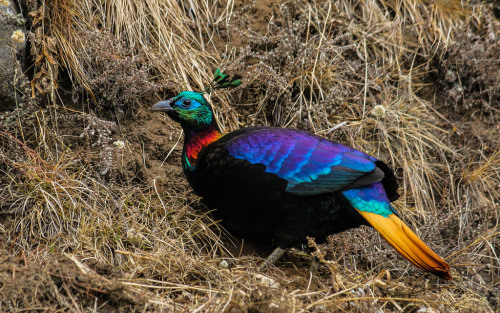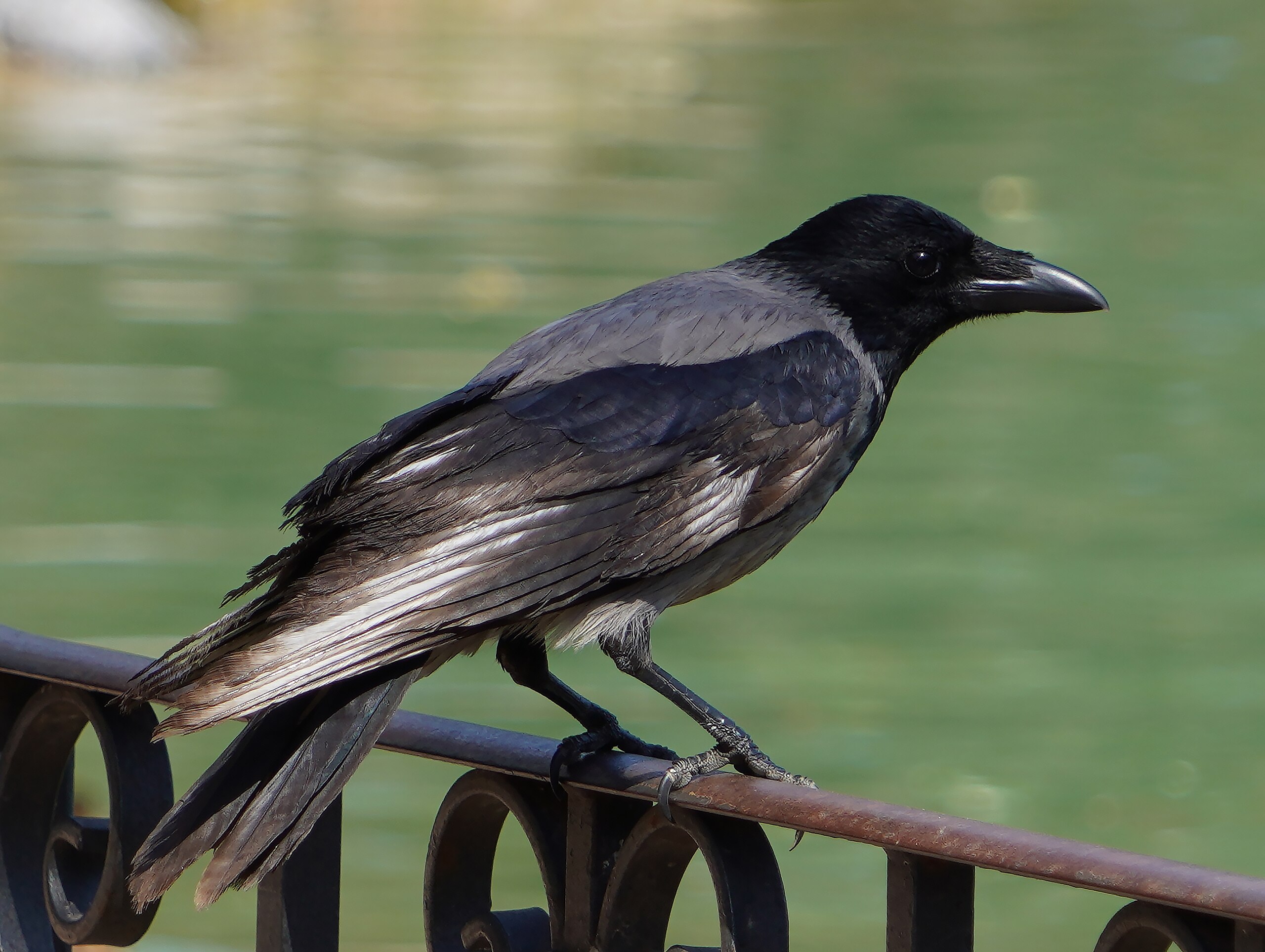Zhenniao(鴆鳥)

Zhenniao (Chinese: 鴆鳥; pinyin: zhènniǎo; lit. 'poison-feather bird'), often simplified to zhen, features prominently in Chinese mythology, historical records, and poetry as a deadly poisonous bird believed to have inhabited southern China.
The fifth chapter of the Classic of Mountains and Seas describes the zhen as eagle-like, noting its presence on several southern mountains including Mount Nüji in what is now Jiangsu province, as well as Mount Qingu, Jade Mountain, and Mount Yaobi. According to Eastern Jin scholar Guo Pu, two distinct birds shared the name zhen: a venomous bird of prey that consumed snakes, and a pheasant-like species from Mount Yaobi that fed on malodorous insects called fěi.
In his commentaries, Guo Pu provides a detailed description of the zhen as having a purple abdomen, green-tipped feathers, an elongated neck, and a scarlet beak. The bird supposedly gained its toxic properties by consuming the heads of venomous vipers. Male and female zhen were distinctively named huíyáng ('revolving sun') and yīnyūn ('Yin harmony'), respectively.
Further accounts appear in Guo Yigong's third-century Extensive Records, later lost but preserved through quotations in the Guangyun and Song-era Piya dictionary. These sources portray the zhen as goose-like with dark purple coloration and a copper-colored beak measuring 7-8 cun in length. The bird's entire body—from its veins to its feather tips—was reportedly infused with an exceptionally potent poison called zhèndú.
This deadly toxin made the zhen's feathers particularly valuable for assassination purposes when dipped in liquor. The bird's meat was considered too obviously toxic for covert poisonings due to its strong odor, while its excrement was said to dissolve stone. The poison was supposedly so lethal that mere contact with a person's throat could prove fatal. According to the Taoist text Baopuzi by Ge Hong, only rhinoceros horn—fashioned into hairpins—could neutralize the zhen's poison, foaming when stirred into poisonous concoctions.
The last reported sightings of wild zhenniao allegedly occurred during the Song dynasty when Han Chinese agricultural expansion into Guangdong and Guangxi led to their extinction through human hunting. Chinese ornithologists have theorized that the zhen might have resembled either the secretary bird or the crested serpent eagle of southern China, potentially acquiring toxicity by consuming poisonous snakes—similar to how poison dart frogs derive their toxins from their diet.
For most of modern history, zoologists dismissed the zhen as purely mythological since no poisonous birds were known to science. However, in 1992, a groundbreaking article in Science reported the discovery of the hooded pitohui of New Guinea, which possesses poisonous feathers. Since then, several other toxic bird species have been identified, most acquiring their poison from their prey. This discovery prompted a 2007 Chinese article to reconsider whether the legendary zhen might have actually existed.


